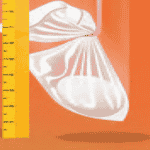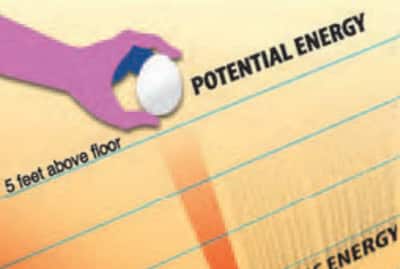Overview
STEM careers
Time
Materials
Per Team of 2-3 Students:
- Nylon stockings
- Rubber bands
- Balloons
- Yarn
- 2 plastic sandwich bags
- Pennies
- An egg (preferably raw)
- Newspaper
- Ruler
Instructions
PREPARATION:
- Spread newspaper on the floor of the testing zone. Divide students into teams of 2 or 3.
- Give teams the challenge: to design a bungee jump for a raw egg that starts at 5 feet and stops within 2 inches of the floor. If the egg stops too far above the floor, the ride isn’t exciting enough. But if the egg hits the floor, the jump fails the safety test.
- Students examine their materials to see how stretchy they are. They pick which ones to make a bungee cord with. They test their cord with a test egg, made out of enough pennies to weigh about the same as an egg and placed in a plastic bag.
- Tell students to tie one end of the bungee cord to their test plastic bag.
- If the test egg hits the ground or doesn’t come within 2 inches, students need to come up with a new design.
- After they have retested and are satisfied, they can try their bungee jump out with a real raw egg in a plastic bag.

DESIGN:
EVALUATE AND REDESIGN:
.
Guiding questions
-
What happens if you change the length of the bungee cord?
-
What happens if you change the materials the bungee cord is made out of?
-
What happens if you add weight to the test egg?
Engineering & science connections
- Potential energy is how much energy an object has because of where it’s located or what it has stored. Kinetic energy is the energy an object has due to motion. Gravitational force is the attraction between the earth and an object.
- Engineers use stretchy or elastic materials to solve many problems. Memory metals are one type of elastic material that engineers have created, and they are now used to make eyeglass frames that can return to their original state if bent. Seismic engineers have designed elastic bridge connectors that can expand and then go back to their original shape so bridges don’t fall apart in earthquakes.
- Bungees rely on the principle of elasticity to reduce the forces acting on the jumper. Bungee cords stretch because they are made from elastic materials, which are able to return to their original shape after they’ve been stretched. The amount that a bungee cord will stretch depends on how elastic it is, how much the falling item weighs, and how far the item falls.
This activity is from the DVD Discover Engineering / version 2.0. © 2010. Discover Engineering / version 2.0 was produced by the National Engineers Week Foundation, with major funding provided by the S. D. Bechtel, Jr. Foundation. The accompanying video, The Sum of All Thrills, may also be seen on DiscoverE.org/ouractivities. The video follows three everyday middle school kids as they design and test a ride at a famous amusement park. Discover Engineering / version 2.0 may be reproduced without permission for classroom use only.


0 Comments